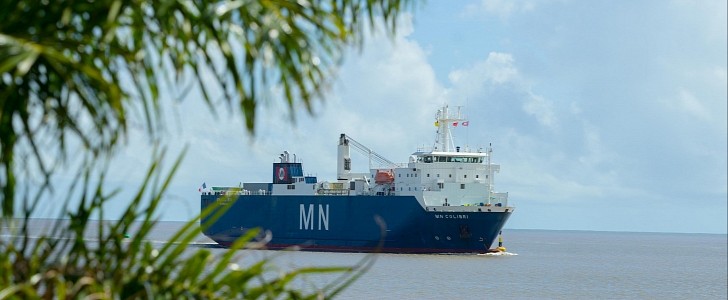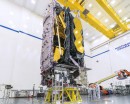It took more than two weeks for the massive observatory to return to dry land. NASA's James Webb Space Telescope traveled for 5,800 miles (9,334 km) in a custom-built shipping container from California to Kourou, French Guiana. Now that Webb has arrived in Kourou, NASA's engineers are working on getting it ready for its next stop: space.
A Webb team spent over a month folding, stowing, and prepping the giant observatory for shipment to South America after completing testing in August at Northrop Grumman's Space Park in Redondo Beach, California.
On September 24th, Webb traveled about 26 miles (42 km) through Los Angeles streets in a custom-built environmentally controlled container, escorted by police, from Redondo Beach to Naval Weapons Station Seal Beach.
From there, the telescope was transferred to MN Colibri, a French-flagged cargo ship. The space science observatory departed Seal Beach on September 26th, and after 16 days, it arrived at its future launch site: the Guiana Space Centre.
This ocean journey was the last earthbound journey for Webb. NASA's engineers will conduct final tests on the observatory's condition after it is removed from its shipping container. The next step for the team is to make the final preparations for the telescope's big space journey.
On December 18th, Webb will be launched atop an Ariane 5 rocket and will travel for about a month to reach its final orbit located 1 million miles (1.5 million kilometers) away from the Earth. Once in space, Webb will peer into all phases of cosmic history and will help scientists search for evidence of potentially habitable alien worlds.
"Webb has crossed the country and traveled by sea. Now it will take its ultimate journey by rocket one million miles from Earth, to capture stunning images of the first galaxies in the early universe that are certain to transform our understanding of our place in the cosmos," says Gregory Robinson, Webb's program director at NASA Headquarters.
On September 24th, Webb traveled about 26 miles (42 km) through Los Angeles streets in a custom-built environmentally controlled container, escorted by police, from Redondo Beach to Naval Weapons Station Seal Beach.
From there, the telescope was transferred to MN Colibri, a French-flagged cargo ship. The space science observatory departed Seal Beach on September 26th, and after 16 days, it arrived at its future launch site: the Guiana Space Centre.
This ocean journey was the last earthbound journey for Webb. NASA's engineers will conduct final tests on the observatory's condition after it is removed from its shipping container. The next step for the team is to make the final preparations for the telescope's big space journey.
On December 18th, Webb will be launched atop an Ariane 5 rocket and will travel for about a month to reach its final orbit located 1 million miles (1.5 million kilometers) away from the Earth. Once in space, Webb will peer into all phases of cosmic history and will help scientists search for evidence of potentially habitable alien worlds.
"Webb has crossed the country and traveled by sea. Now it will take its ultimate journey by rocket one million miles from Earth, to capture stunning images of the first galaxies in the early universe that are certain to transform our understanding of our place in the cosmos," says Gregory Robinson, Webb's program director at NASA Headquarters.







